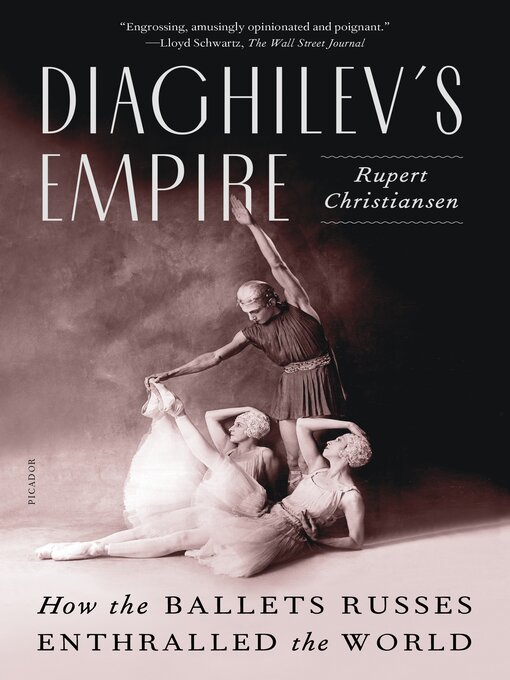A Best Book of the Year at The New Yorker and The Telegraph
"Amusing and assertive . . . [Christiansen's] delight is infectious." —Alexandra Jacobs, The New York Times Book Review
Rupert Christiansen, a renowned dance critic and arts correspondent, presents a sweeping history of the Ballets Russes and of Serge Diaghilev's dream of bringing Russian art and culture to the West.
Serge Diaghilev, the Russian impresario and founder of the Ballets Russes, is often said to have invented modern ballet. An art critic and connoisseur, Diaghilev had no training in dance or choreography, but he had a dream of bringing Russian art, music, design, and expression to the West and a mission to drive a cultural and artistic revolution.
Bringing together such legendary talents as Vaslav Nijinsky, Anna Pavlova, Igor Stravinsky, Pablo Picasso, and Henri Matisse, this complex and visionary genius created a new form of ballet defined by artistic integrity, creative freedom, and an all-encompassing experience of art, movement, and music. The explosive color combinations, sensual and androgynous choreography, and experimental sounds of the Ballets Russes were called "barbaric" by the Parisian press, but its radical style usurped the entrenched mores of traditional ballet and transformed the European cultural sphere at large.
Diaghilev's Empire, the publication of which marks the one hundred fiftieth anniversary of Diaghilev's birth, is a daring, impeccably researched reassessment of the phenomenon of the Ballets Russes and the Russian Revolution in twentieth-century art and culture. Rupert Christiansen, a leading dance critic, explores the fiery conflicts, outsize personalities, and extraordinary artistic innovations that make up this enduring story of triumph and disaster.
- New eBook additions
- Available now
- Travel Guides - Always Available!
- Home Cooking
- Duke Classics
- Immerse Yourself in a Long Sweeping Saga
- Mindfulness and Meditation
- Take Up a New Hobby
- New kids additions
- New teen additions
- Most popular
- Try something different
- Asian & Pacific American Heritage
- See all ebooks collections
- New audiobook additions
- New teen additions
- New kids additions
- Most popular
- Available now
- Great Narrators
- Learn a New Language!
- Try something different
- Audiobooks for your Commute
- Audiobooks for the Whole Family
- Everyone's Favorite Kids' Books of 2023
- See all audiobooks collections
- Popular Magazines
- Business & Finance
- Food & Cooking
- Just Added
- Popular Magazine Titles
- See all magazines collections




